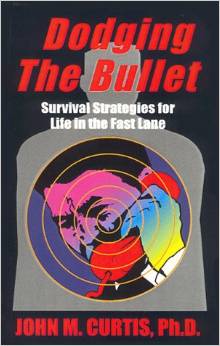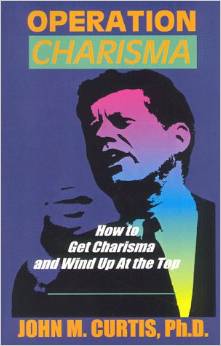Closing the revised edition of the North American Free Trade Agreement, NAFTA II, 72-year-old President Donald Trump silenced critics, complaining about his brash rhetoric with Mexican President Enrique Pena Nieto and Canadian Prime Minister Justin Trudeau. Mexico agreed first to revise NAFTA Aug. 37, prompting Trudeau to play wait-and-see with Trump. In the end, Canada capitulated to Trump’s demands to allow some inroads into Canada’s $16 billion dairy industry. Trudeau flatly rejected a U.S. incursion to Canada’s closed dairy market, eventually agreeing to allow the U.S. to sell up to 3.5% to the industry. When Trudeau gave Trump a hard time at the June 8-10 G7 conference in Malbaie, Quebec, it looked impossible to see Trudeau play ball with Trump on NAFTA. Four months later, Trump gets most of what he wants from Canada, more access to Canadian markets.
Trump’s successfully used the threat of tariffs on the Canadian auto industry to get Trudeau back down to earth. Trump wants “fair trade,” not just free trade, especially when free trade agreements hurt U.S. national security. When former President Bill Clinton signed NADTA Dec. 8, 1993, no one expected the U.S. to loose manufacturing jobs, something Trump wants to get back. For all the press criticism of Trump’s impact on the economy, the U.S. economy enjoys record unemployment and over 4% Gross Domestic Product. [GDP]. Trump contends that Clinton’s NAFTA drove American jobs to Canada, Mexico and China, robbing the U.S. of its manufacturing base. When Trump signed the tax bill Dec. 28, 2017, it lowered corporate tax rates from 35% to 21%, driving manufacturers back to the U.S. Today’s NAFTA is bound to cause a bump to U.S. and foreign stock markets.
Media’s anti-Trump narrative finds partisan experts to complain about Trump’s management of the economy. Showing any kind of facts, the media should sing the praises of Trump’s economy, breaking new records in the stock market, creating millions of new jobs in the U.S. Highlighting only Trump’s feuds with world leaders, including Trudeau and Pena, the media can’t admit that Trump boosted the U.S. economy since taking office Jan. 20, 2017. With $1.2 trillion in annual trade, Trump wants to make NAFTA more favorable to the U.S., something not built in to the original agreement. While the U.S. and Canada still can’t settle its dispute on the lumber industry, NAFTA II goes along way resolving problems with the automotive and dairy industries. Giving U.S. dairy farmers 3.5% of the $16 billion annual market, comes with a price for Canada, agreeing to subsidize Canadian dairy farmers.
Canada’s Dairy Farmers of Canada lobbying group, reluctantly accepted the NAFTA II, realizing the trade tariffs would decimate the Canadian auto industry. “Any final NAFTA deal should have no further impact on the dairy sector,” said DFC. They know giving a 3.5% concession to American dairy farmers helps keep commerce flowing to the much bigger auto industry, generating far greater tax revenues for the Canadian government. Agreeing to a 3.6 million vehicle-quota, Canada hopes to avoid a 25% tariff should Trump be forced to levy them. With current production levels a 2 million units, the Canadian auto industry protects auto assembling plants. Trump’s critics either don’t know how NAFTA II improves the U.S. position or chooses to ignore the benefits to slam Trump. Negotiating better trade deals was an essential part of Trump’s campaign promises.
U.S. tariffs on aluminum and steel are slated to continue under NAFTA II, giving the U.S. aluminum and steel industries a boost. “We celebrate the trilateral agreement. The door is closed to the fragmentation of the region,” said President-elect Andreas Manuel Lopez Obrador’s NFTA negotiator said on Twitter. Unlike Pena, that got into rhetorical disputes with Trump over border-and-immigration issues, Mexico’s incoming president shows more willingness to engage with Trump. “NAFTA II will give certainity and stability to Mexican trade with its partners in North America,” said Lopez Orrador’s spokesman. Pulling off revised NAFTA was once considered impossible, now it’s a reality pulled off by Trump. When U.S. markets open tomorrow, NAFTA II is bound to give markets a bounce. More optimism in Mexican and Canadian markets only helps U..S. business.
Pulling another rabbit out his hat, Trump defied the biased media, unwilling to give him any credit for anything good in the economy. When it comes to foreign policy, Trump has a new letter from North Korean dictator Kim Jong-un, apparently thanking Trump for all his efforts to resolve disputes with the Democratic Peoples Repbulic of Korea [PPRK]. No longer threatening nuclear war against the U.S., Kim asks Trump for more talks to help speed things up. When it comes to the economy, saving taxpayer dollars by renegotiating NAFTA boosts U.S. markets, employment and GDP. No one can knock over 4% GDP or record stock market highs, other than partisan elected officials and their media friends. Even Trudeau realized that it’s useless trying to fight Trump on revising NAFTA to help bring back manufacturing to the U.S. Getting NAFTA II was a remarkable feat.



